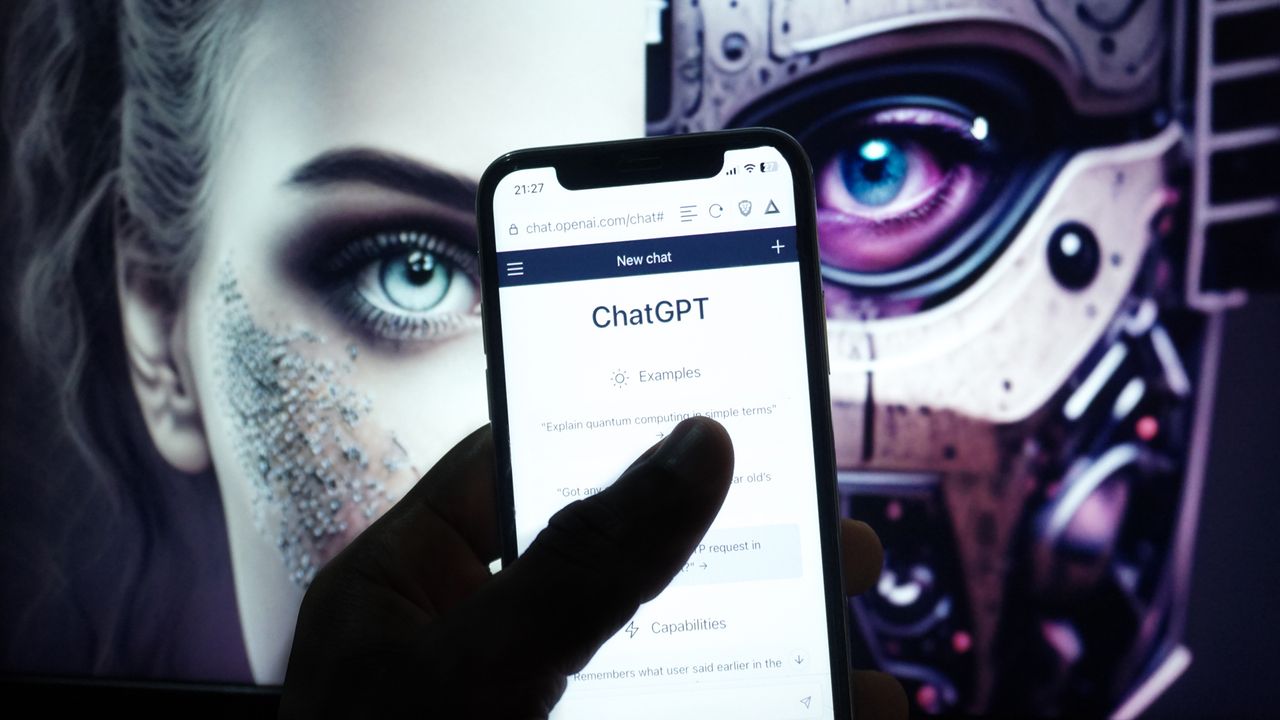
Skin care can sometimes feel like a financial black hole. Whether you’re a teenager searching for the best cleansers to keep your skin clear or someone like me looking for serums and moisturizers to do whatever it takes to hold on to a youthful glow, the perfect skincare routine can easily creep up to cost as much as a week’s groceries. It’s easy to start believing that results are tied directly to the price.
I recently clicked on an Instagram ad for a very pricey serum that Gwenyth Paltrow swears is the key to beauty. I needed to have it! But when I saw the cost, there was no way I could justify it. Knowing how Meta advertising works, I knew I'd only see the ad again and be tempted to buy it, despite the cost.
That’s when I turned to ChatGPT to help me hunt down skincare dupes that were both effective and wallet friendly. With the new shopping feature directly integrated within ChatGPT’s interface, I was hopeful that I could find what I was looking for. Here’s what happened when I let AI be my beauty consultant.
ChatGPT as my personal shopper
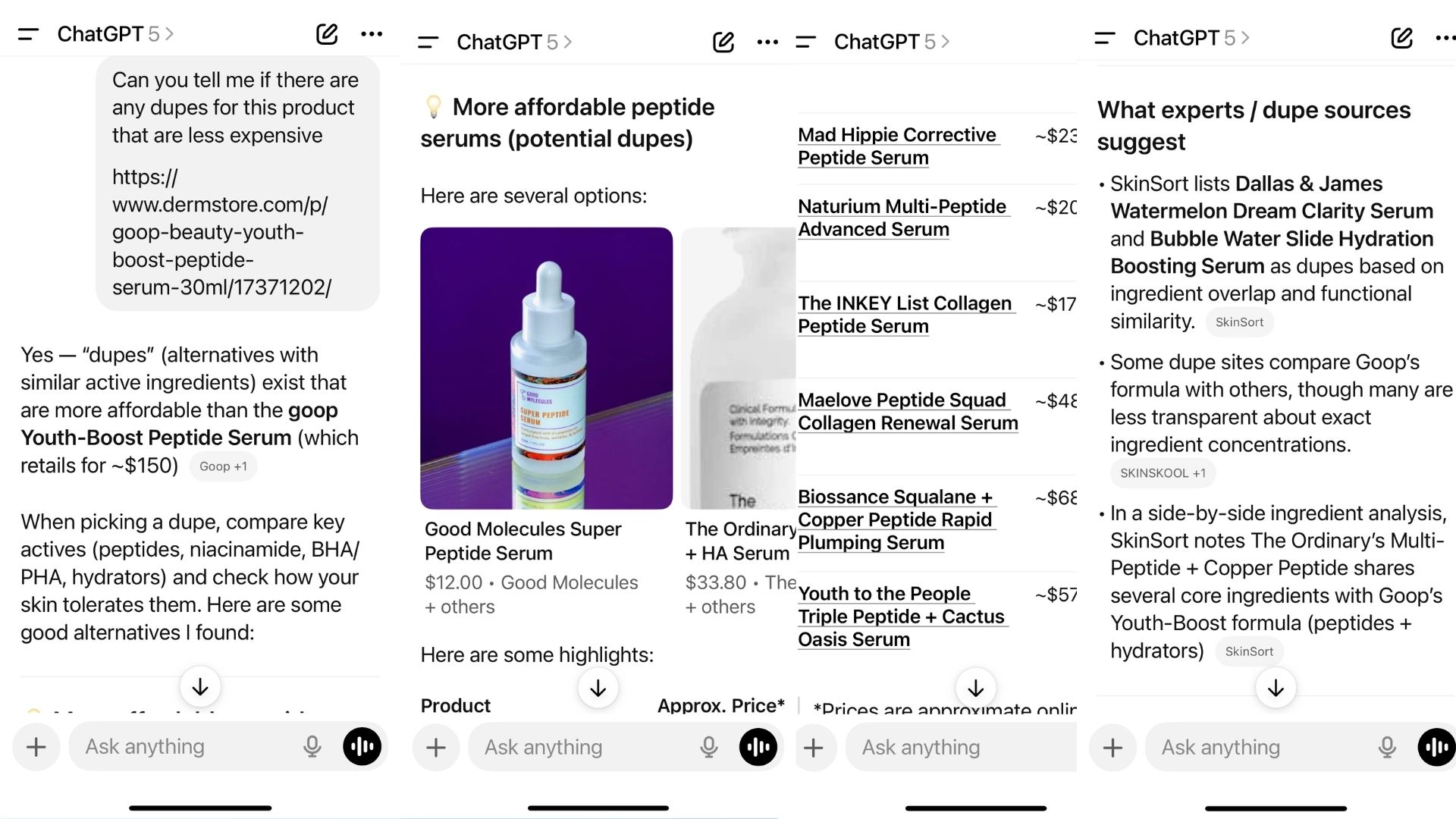
Instead of scrolling endless TikToks or cross-checking beauty blogs, I fed ChatGPT the expensive Goop product I wanted. I asked it to help me find lower-cost alternatives with similar active ingredients. I was immediately given a list of products that I didn’t even know existed.
ChatGPT explained the Goop dupe
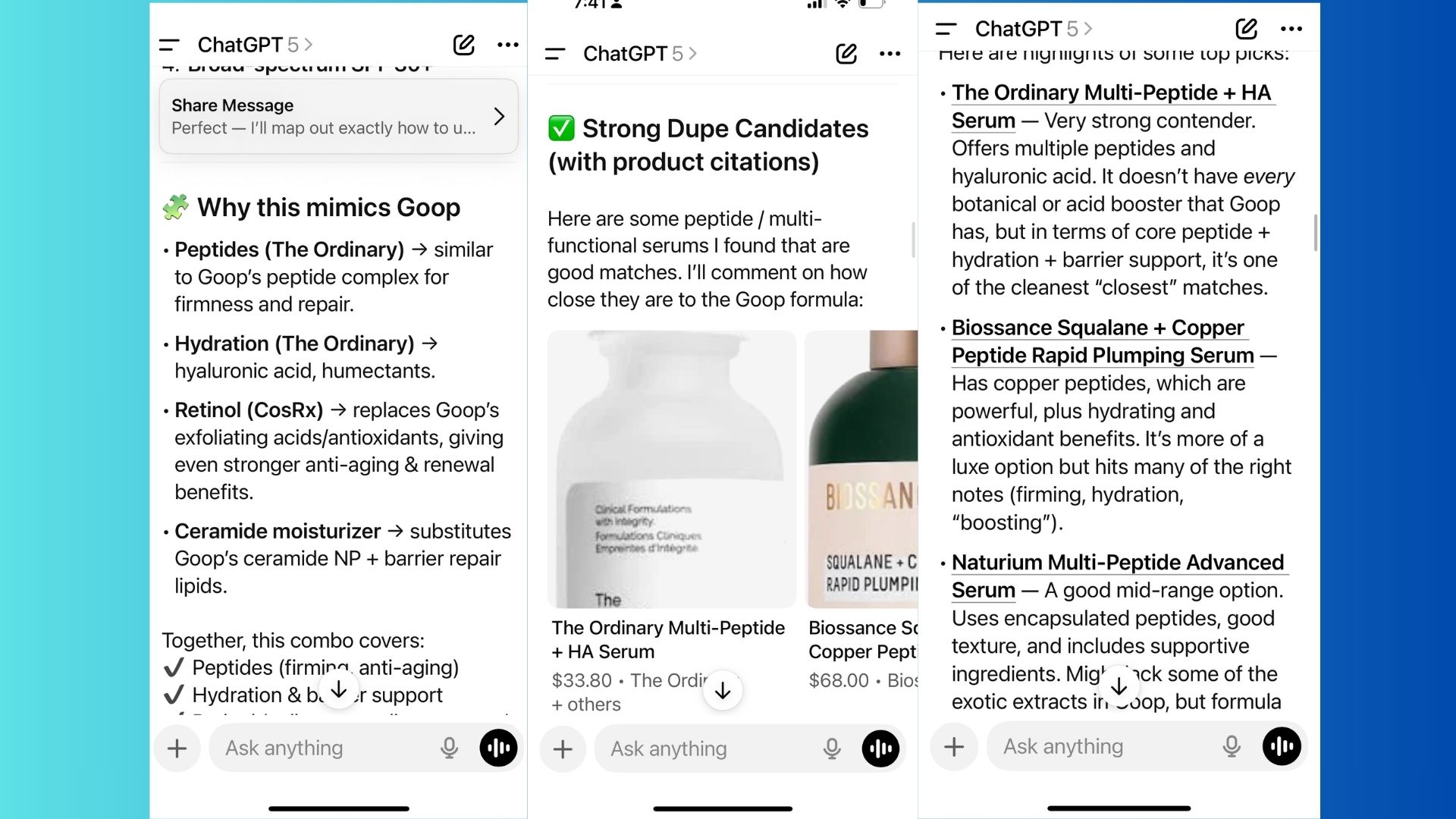
To my surprise, these brands had a lot to offer including clean ingredients and didn’t test on animals, but the biggest selling point was that they included the same ingredients as the Goop product.
But there was a catch: Instead of using one Goop serum, I would have to buy at least three different products that added up to everything in it. That’s when I turned to ChatGPT to go a bit deeper in my research.
ChatGPT also helped me find a routine
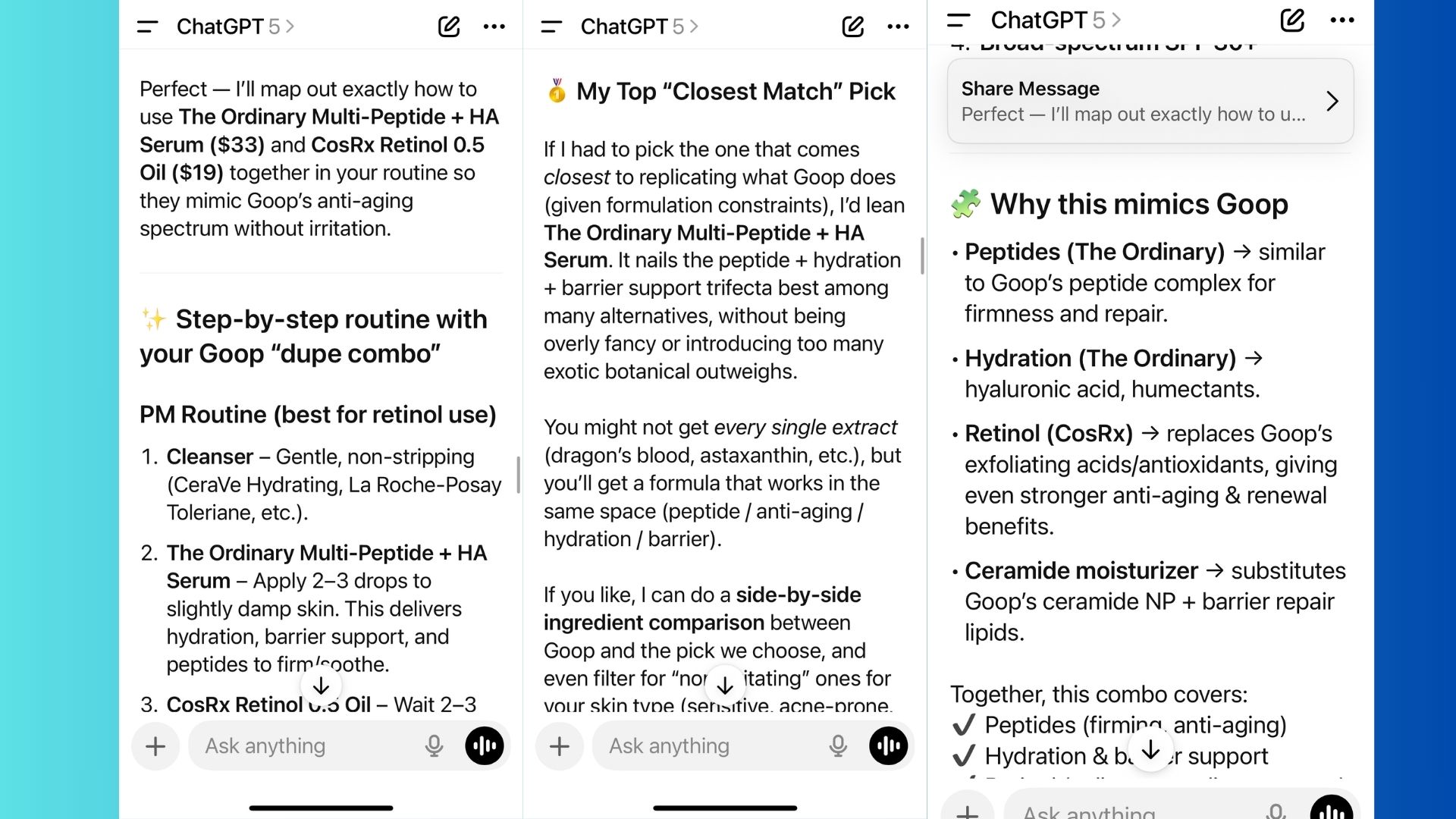
Although the products ChatGPT suggested to get me very close to a Goop dupe, I wasn’t sure how to use them all together to get the same results. That’s when I told ChatGPT my current skincare routine.
To my surprise, I was already using a serum that had some of the Goop ingredients, which meant I actually only needed to buy one new product, which was only $30. This was a huge savings from the original $150 of the Goop product. ChatGPT told me how to layer the products – both what I already had in my routine and the new one I could easily buy on Amazon.
Limitations and other things to consider
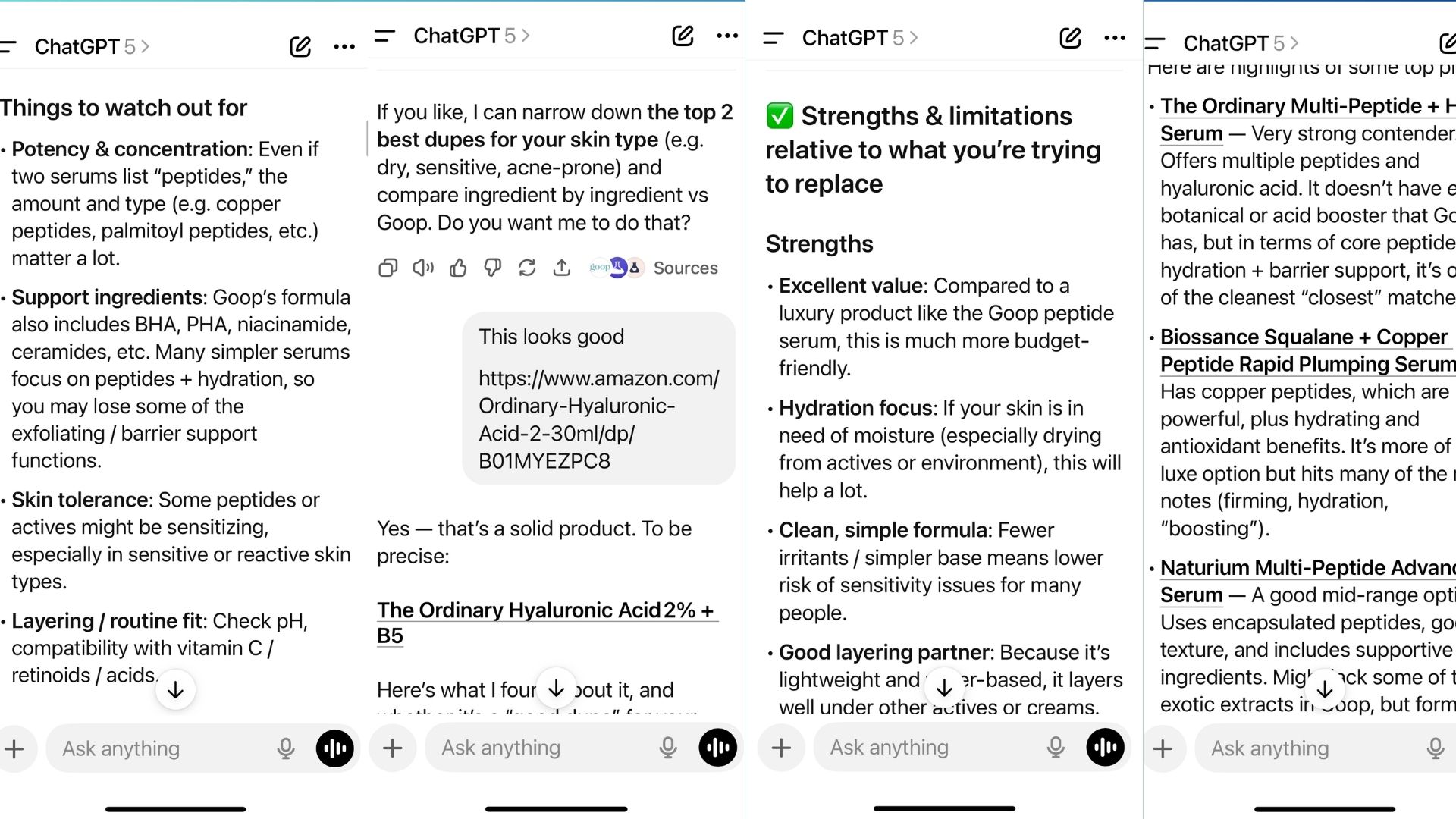
ChatGPT isn’t a dermatologist. It can’t give personalized medical advice, and it sometimes recommends products that are hard to find depending on location. I still had to double-check reviews, ingredient lists and availability. With a luxury product like Goop, the ingredients are measured, which means there is less of a chance for irritation. By layering products, I had to be careful not to use too much of any given one to avoid redness and irritation.
Bottom line
Skincare is often marketed as exclusive, but AI tools like ChatGPT can cut through the hype and put effective products in reach for more people. With a few prompts, I cut my routine cost by more than half while keeping my skin happy. And the in-chat shopping made it really easy to shop directly within the app.
I plan on trying this with makeup dupes next. We'll see how that goes! The takeaway here is that you don’t need to drain your bank account for healthy skin — and sometimes, a chatbot can be the most practical beauty tool on your shelf.
Follow Tom's Guide on Google News and add us as a preferred source to get our up-to-date news, analysis, and reviews in your feeds. Make sure to click the Follow button!







